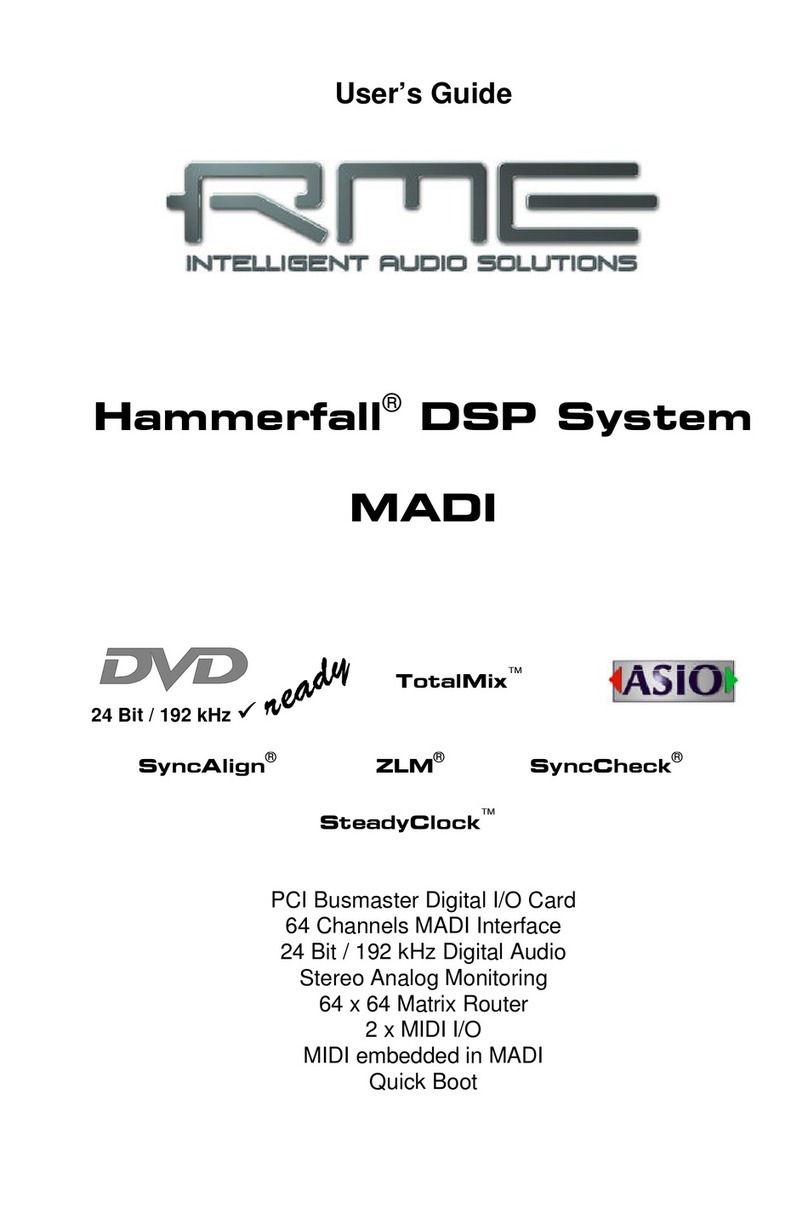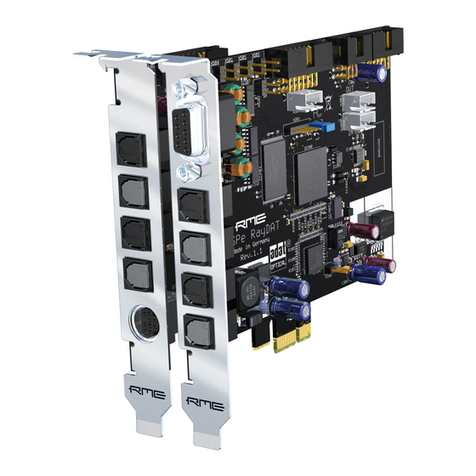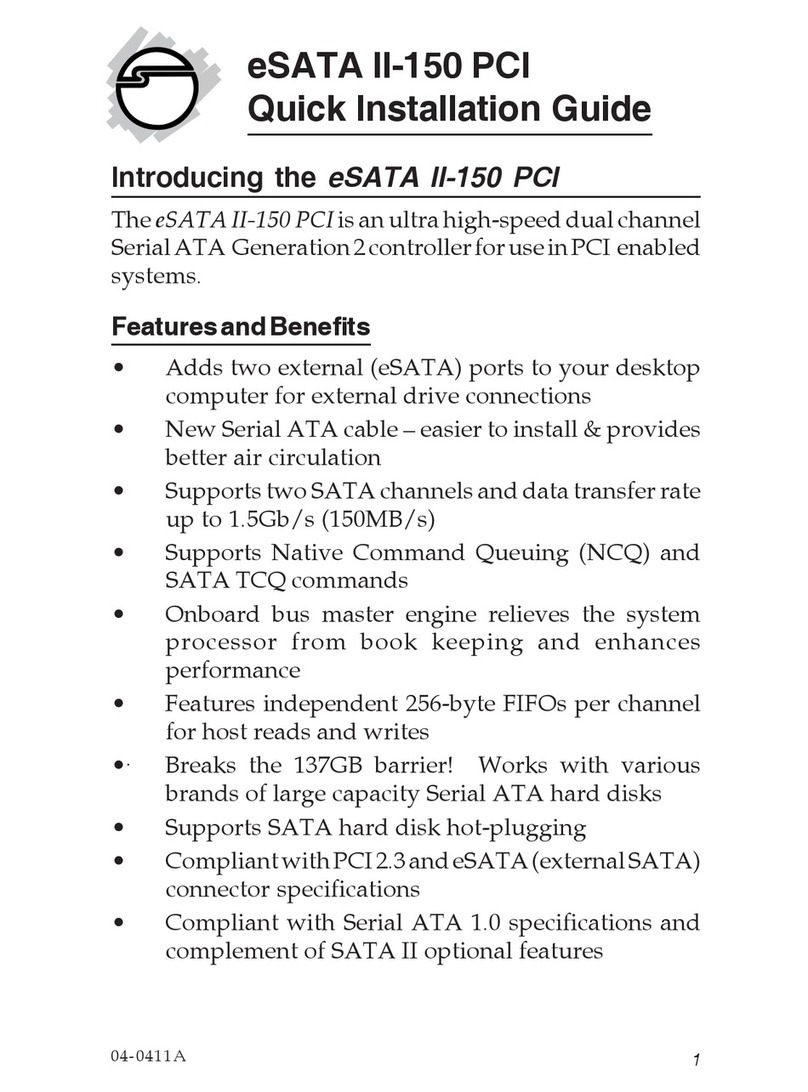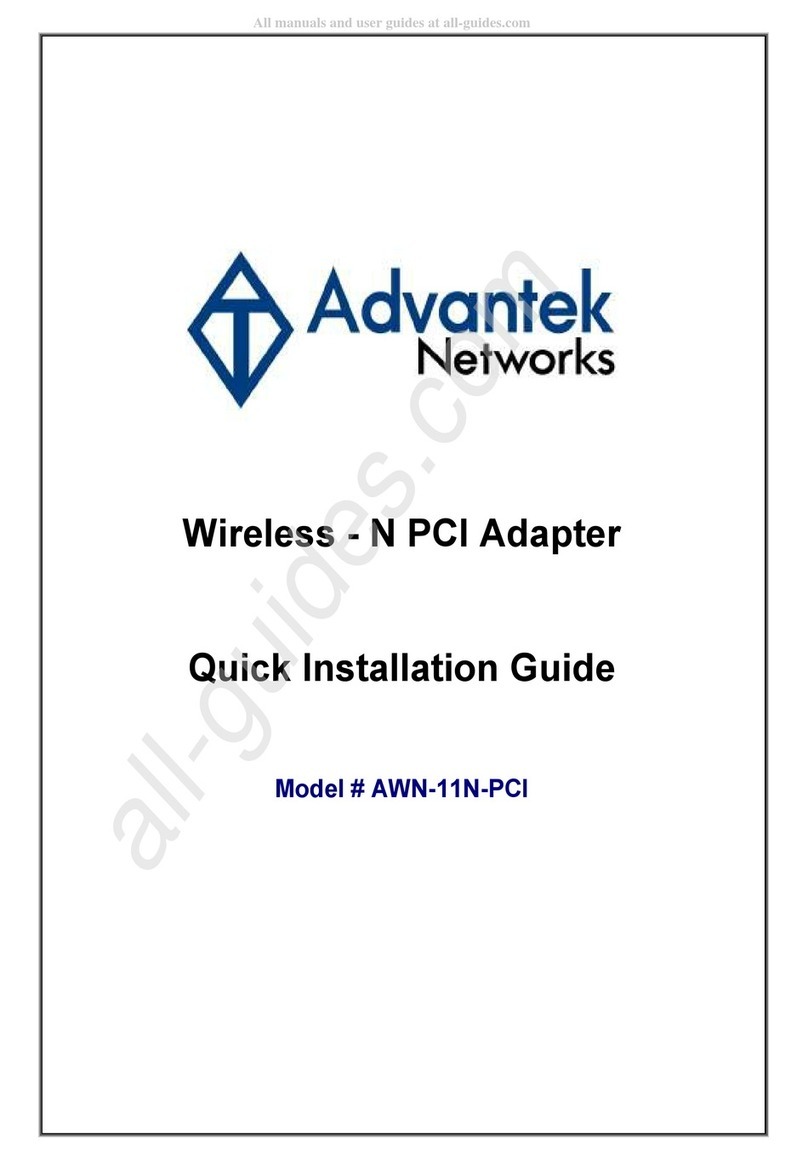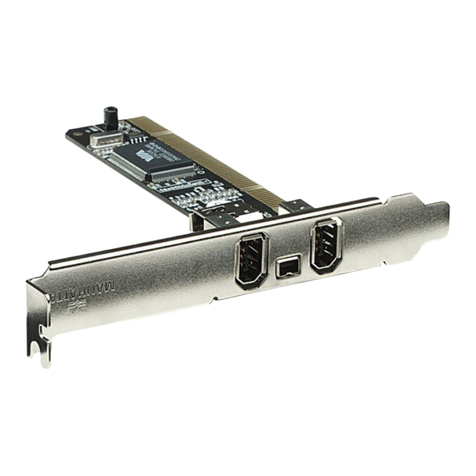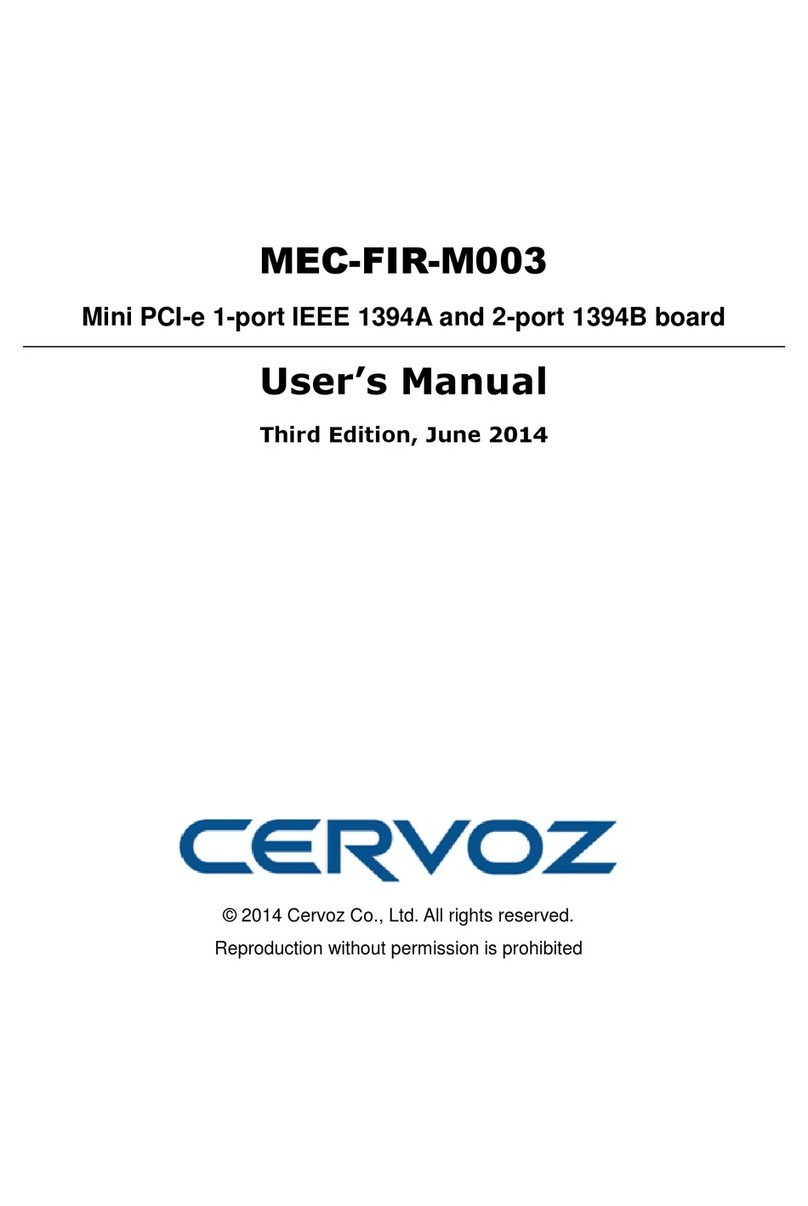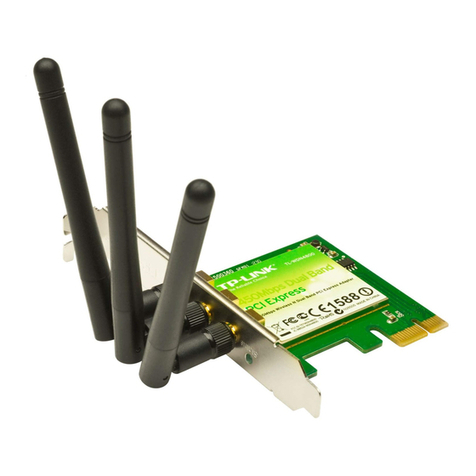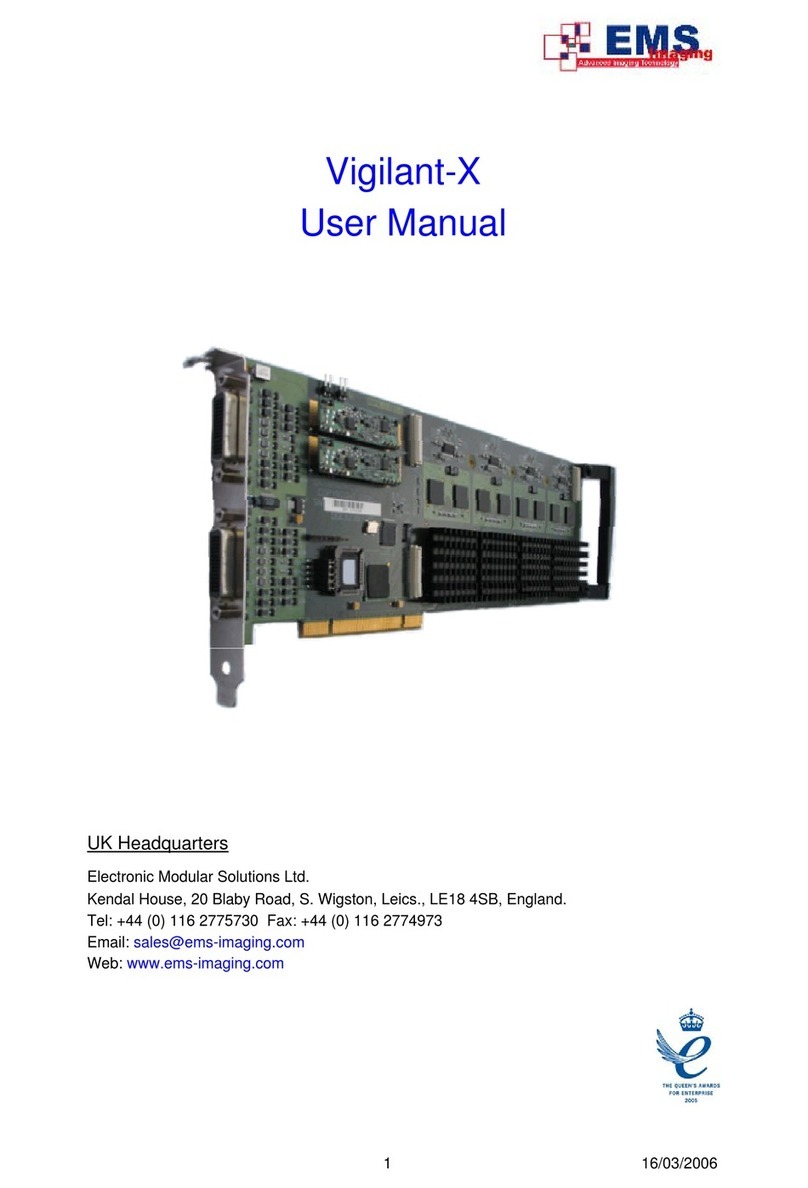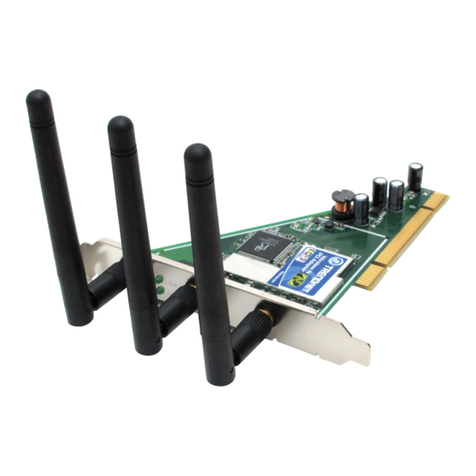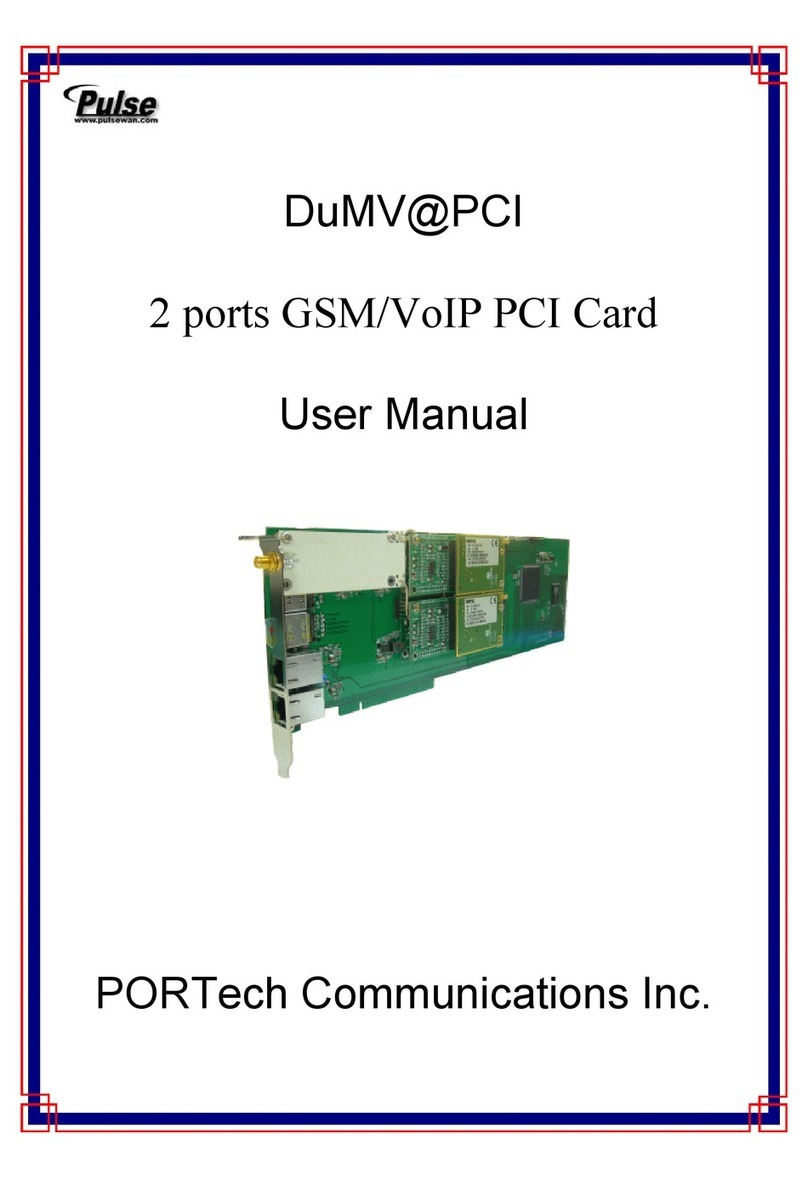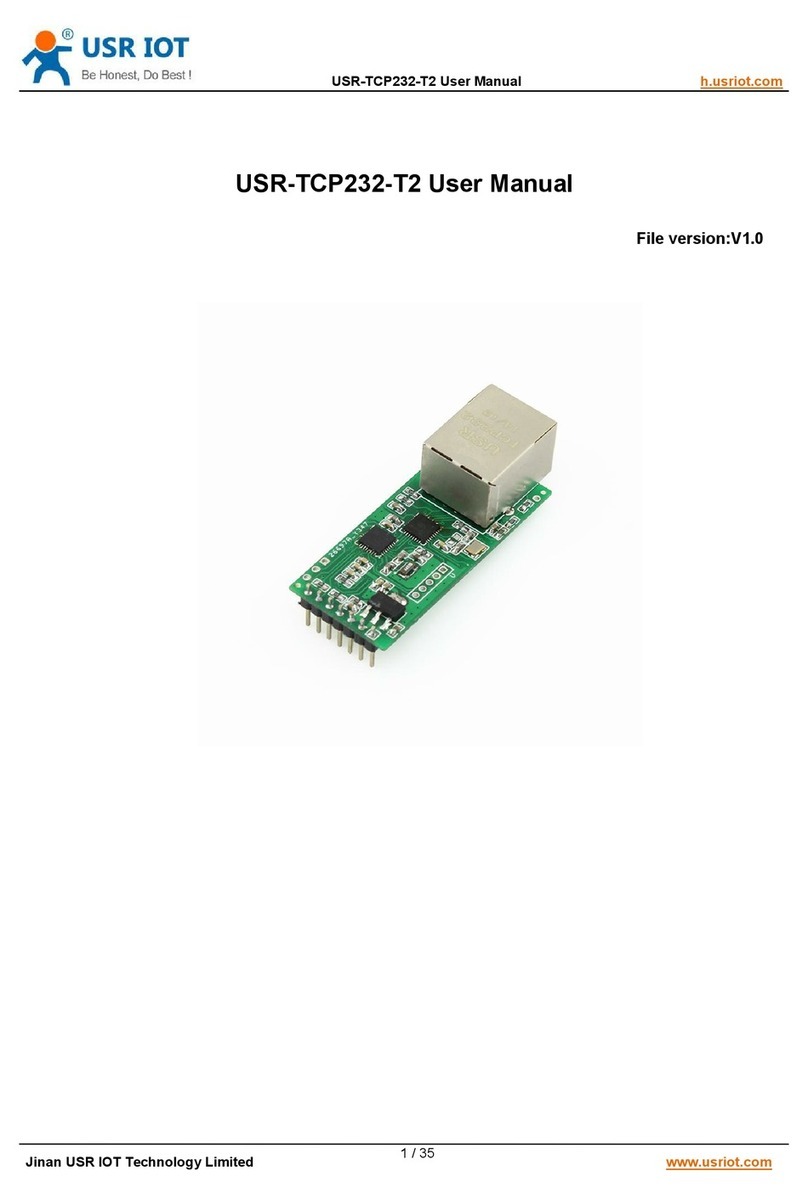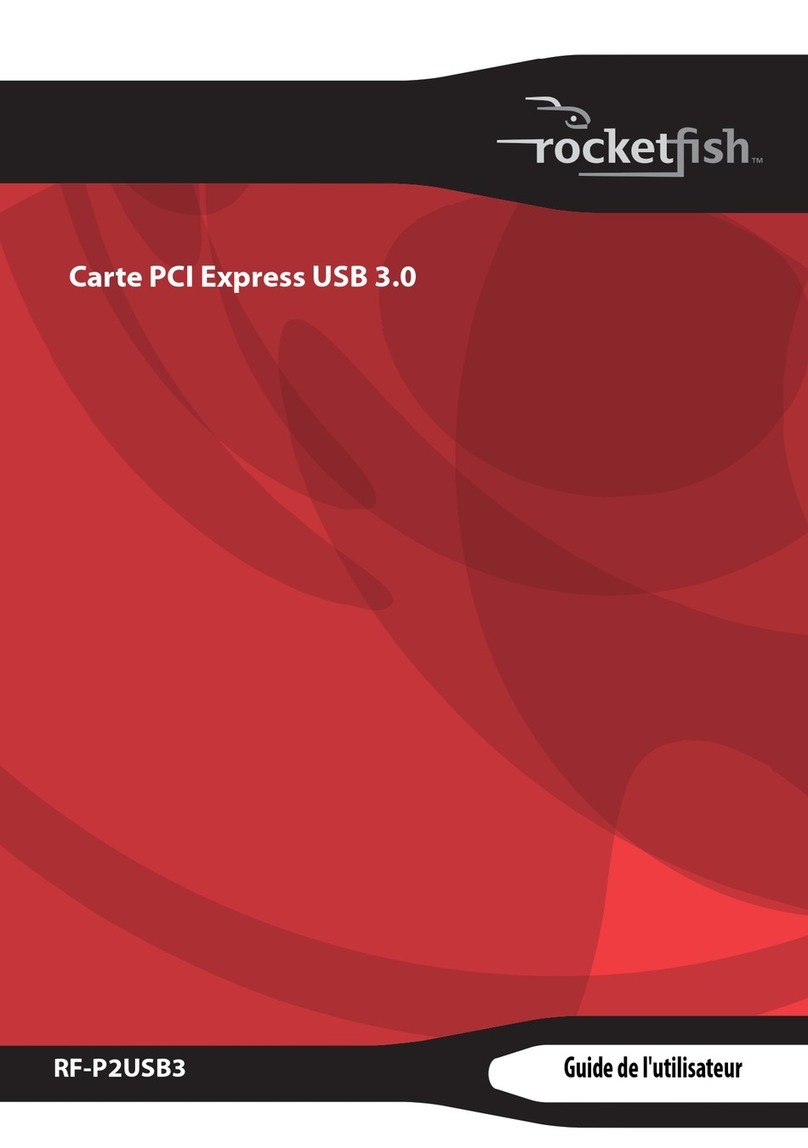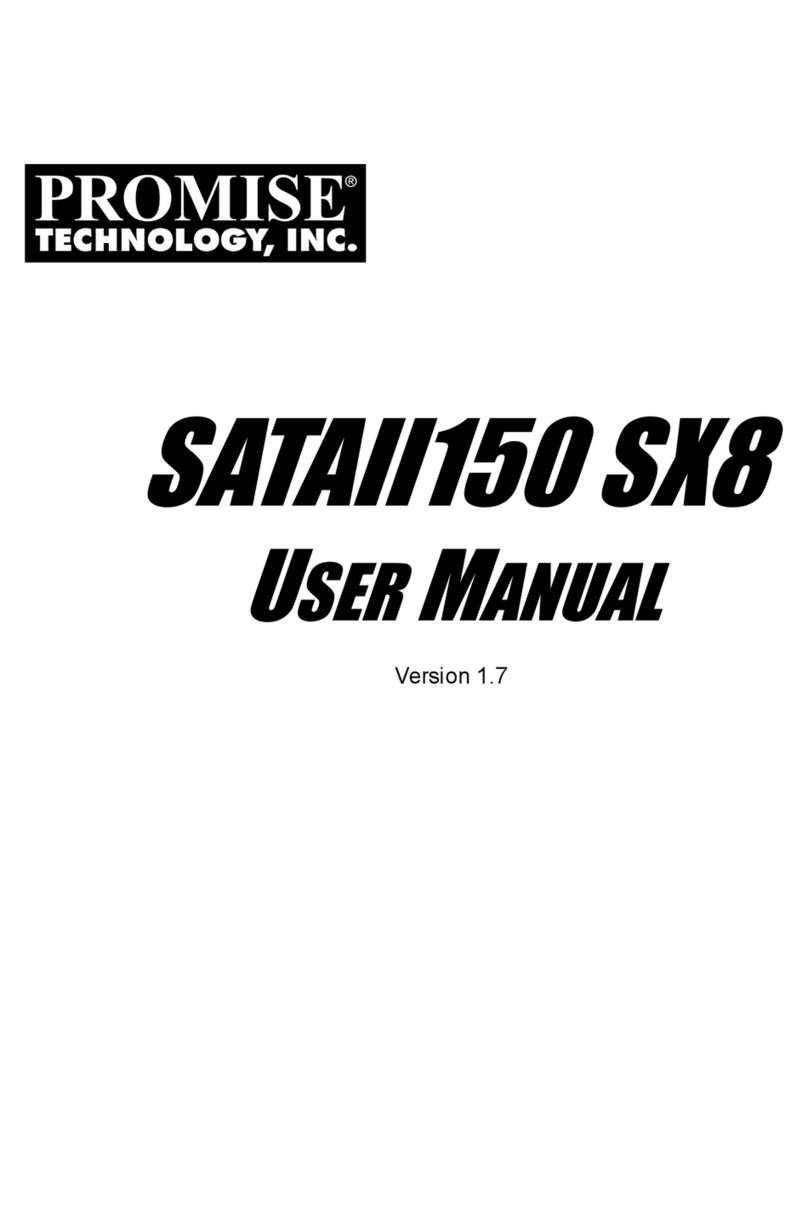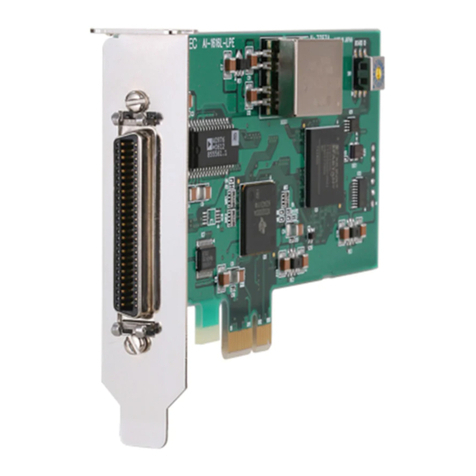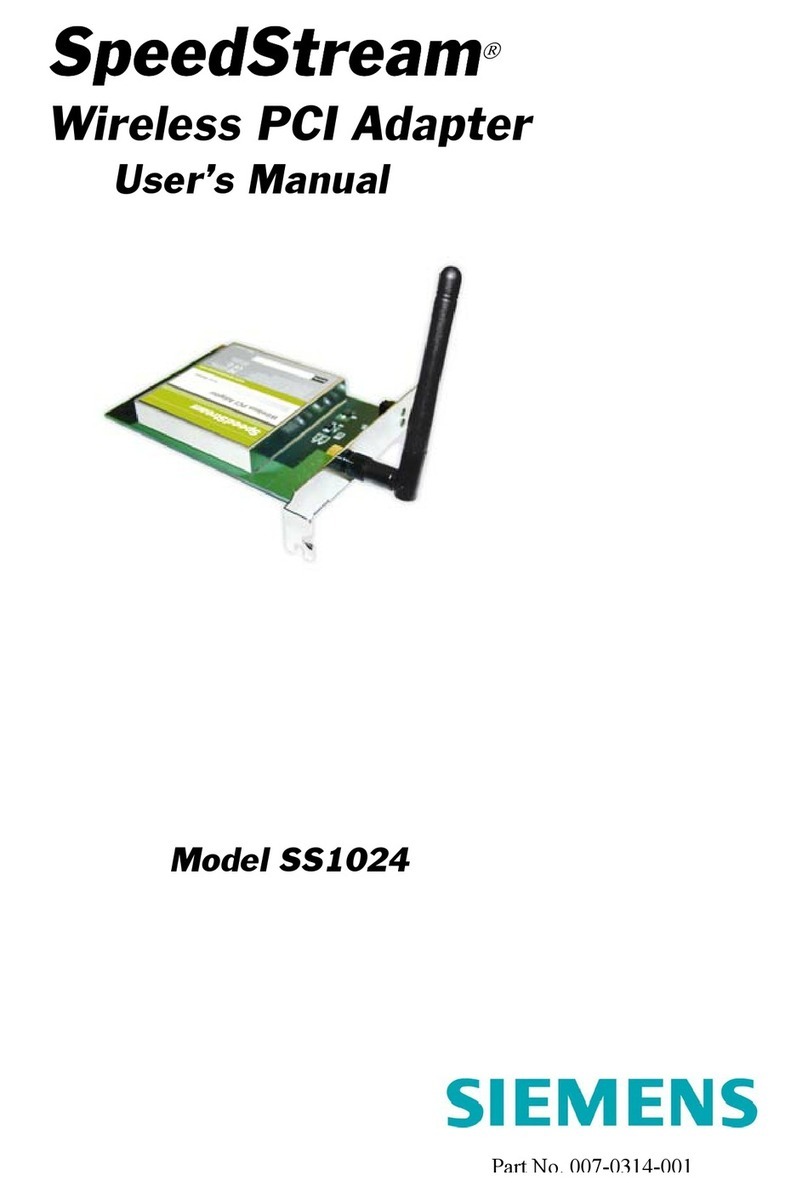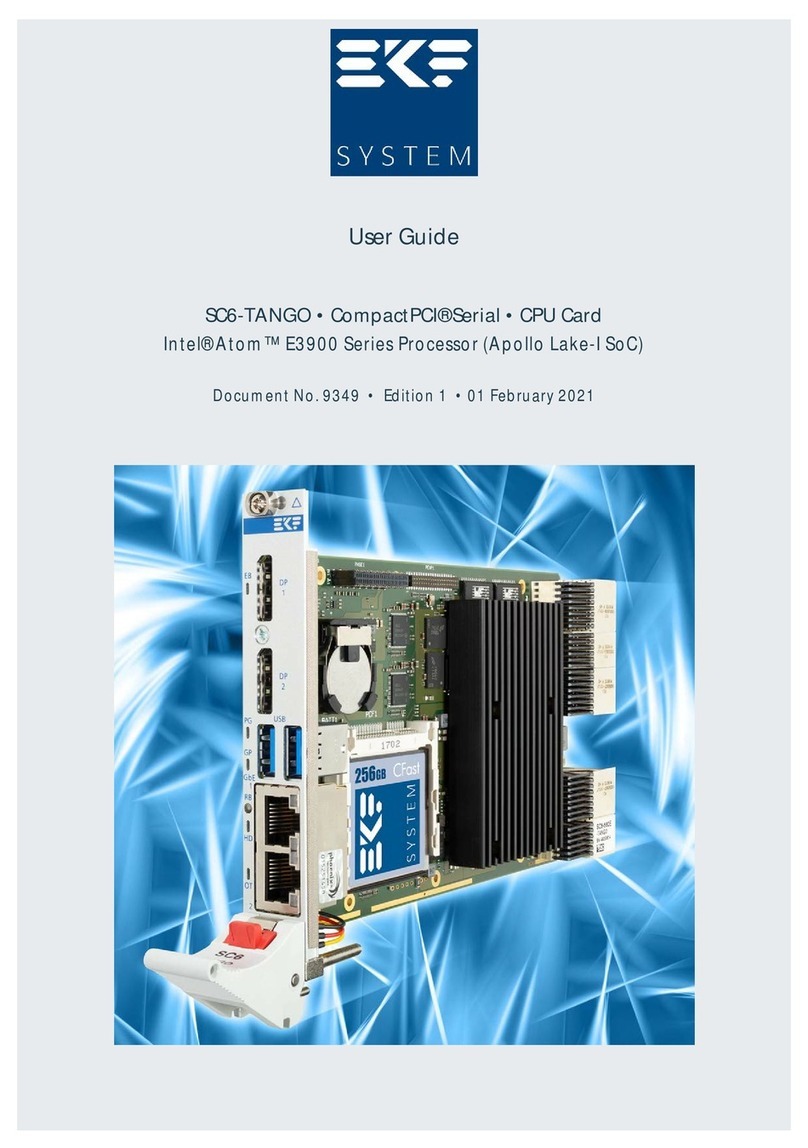RME Audio Hammerfall DSP System MADI User manual

User's Guide
Hammerfall®DSP System
MADI
PCI Busmaster Digital I/O Card
64 Channels MADI Interface
24 Bit / 96 kHz Digital Audio
Stereo Analog Monitoring
128 x 64 Matrix Router
2 x MIDI I/O
MIDI embedded in MADI
Quick Boot
TotalMix™
24 Bit / 96 kHz 9
SyncAlign
®
ZLM
®
SyncCheck
®
SteadyClock™

2 User's Guide HDSP MADI © RME
General
1 Introduction ...............................................................6
2 Package Contents.....................................................6
3 System Requirements ..............................................6
4 Brief Description and Characteristics.....................6
5 Hardware Installation................................................7
6 Hardware – Connectors
6.1 External Connectors ..............................................7
6.2 Internal Connectors................................................8
7 Accessories...............................................................8
8 Warranty.....................................................................8
9 Appendix....................................................................9
Driver Installation and Operation - Windows
10 Driver and Firmware
10.1 Driver Installation .................................................12
10.2 Driver Update.......................................................12
10.3 De-Installing the Drivers.......................................13
10.4 Firmware Update..................................................13
11 Configuring the HDSP MADI
11.1 Settings Dialog.....................................................14
11.2 Settings Dialog – DDS .........................................16
11.3 Clock Modes – Synchronization...........................17
12 Operation and Usage
12.1 Playback...............................................................19
12.2 DVD Playback (AC-3 / DTS) ................................20
12.3 Notes on WDM.....................................................21
12.4 Multi-client Operation ...........................................21
12.5 Digital Recording..................................................22
13 Operation under ASIO
13.1 General ................................................................24
13.2 Known Problems..................................................24
14 Operation under GSIF.............................................25
15 Using multiple HDSP MADI....................................25
16 DIGICheck................................................................26
17 Hotline – Troubleshooting
17.1 General ................................................................27
17.2 Installation............................................................28

User's Guide HDSP MADI © RME 3
Driver Installation and Operation - Mac OS X
18 Driver and Flash Update
18.1 Driver Installation.................................................30
18.2 Driver Update.......................................................30
18.3 Flash Update........................................................30
19 Configuring the HDSP MADI
19.1 Settings Dialog.....................................................31
19.2 Settings Dialog – DDS.........................................33
19.3 Clock Modes – Synchronization ..........................34
20 Mac OS X FAQ
20.1 Round about Driver Installation ...........................35
20.2 MIDI doesn't work................................................35
20.3 Supported Sample Rates.....................................36
20.4 Repairing Disk Permissions.................................36
20.5 PCI Compatibility .................................................36
20.6 Various Information..............................................36
21 Hotline – Troubleshooting .....................................37
Connections and TotalMix
22 Connections
22.1 Headphones ........................................................40
22.2 MADI I/O ..............................................................40
22.3 MIDI .....................................................................41
23 Word Clock
23.1 Word Clock Input and Output ..............................41
23.2 Technical Description and Background...............42
23.3 Cables and Termination.......................................43
23.4 General Operation................................................44
24 TotalMix: Routing and Monitoring
24.1 Overview..............................................................45
24.2 The User Interface...............................................47
24.3 Elements of a Channel ........................................48
24.4 Tour de TotalMix..................................................48
24.5 Submix View ........................................................50
24.6 Mute and Solo......................................................50
24.7 Quick Access Panel.............................................51
24.8 Presets.................................................................51
24.9 Monitor Panel.......................................................53
24.10 Preferences........................................................53
24.11 Editing the Names..............................................54
24.12 Hotkeys ..............................................................55
24.13 Menu Options.....................................................56
24.14 Level Meter ........................................................57

4 User's Guide HDSP MADI © RME
25 TotalMix: The Matrix
25.1 Overview..............................................................58
25.2 Elements of the Matrix View ................................58
25.3 Usage...................................................................58
25.4 Advantages of the Matrix .....................................59
26 TotalMix Super-Features
26.1 ASIO Direct Monitoring (Windows only) ..............59
26.2 Selection and Group based Operation ................60
26.3 Copy Routings to other Channels........................60
26.4 Delete Routings....................................................60
26.5 Recording a Subgroup (Loopback)......................61
26.6 Using external Effects Devices............................62
27 TotalMix MIDI Remote Control
27.1 Overview..............................................................63
27.2 Mapping ...............................................................63
27.3 Setup....................................................................64
27.4 Operation .............................................................64
27.5 Simple MIDI Control.............................................65
27.6 Loopback Detection .............................................66
Technical Reference
28 Tech Info ..................................................................68
29 Technical Specifications
29.1 Inputs ...................................................................69
29.2 Outputs.................................................................69
29.3 Digital ...................................................................70
29.4 MIDI......................................................................70
30 Technical Background
30.1 MADI Basics.........................................................71
30.2 Lock and SyncCheck ...........................................72
30.3 Latency and Monitoring........................................73
30.4 DS – Double Speed .............................................74
30.5 QS – Quad Speed................................................75
30.6 SteadyClock.........................................................76
30.7 PCI - Performance ...............................................77
30.8 Terminology .........................................................78

User's Guide HDSP MADI © RME 5
User's Guide
HDSP MADI
General

6 User's Guide HDSP MADI © RME
1. Introduction
Thank you for choosing the Hammerfall DSP MADI. This unique audio system is capable of
transferring digital audio data directly into a computer, from any device equipped with a MADI
interface. Installation is simple, even for the inexperienced user, thanks to the latest Plug and
Play technology. The numerous unique features and well thought-out configuration dialog puts
the Hammerfall DSP MADI at the very top of the range of digital audio interface cards.
The package contains drivers for Windows XP / Vista / 7 and Mac OS X PPC.
Our high-performance philosophy guarantees maximum system performance by executing as
many functions as possible not in the driver (i.e. the CPU), but directly within the audio hard-
ware.
2. Package Contents
Please check that your Hammerfall DSP MADI package contains each of the following:
•HDSP MADI PCI card
•HDSP MADI expansion board
•Quick Info guide
•RME Driver CD
•MIDI breakout cable
•Expansion Board ribbon cable (14-conductor)
3. System Requirements
•Windows XP or higher, Mac OS X PPC (10.4.8 or higher)
•PCI Interface: a free PCI rev. 2.1 Busmaster slot
4. Brief Description and Characteristics
•All settings can be changed in real-time
•8 available buffer sizes/latencies: 0.7 / 1.5 / 3 / 6 / 12 / 23 / 46 / 93 ms
•32 channels 96 kHz/24 bit record/playback
•Automatic and intelligent master/slave clock control
•Word clock input and output
•TotalMix for latency-free submixes and perfect ASIO Direct Monitoring
•SyncAlign guarantees sample aligned and never swapping channels
•SyncCheck tests and reports the synchronization status of input signals
•2 x MIDI I/O, 32 channels high-speed MIDI
•DIGICheck DSP: Level meter in hardware, peak- and RMS calculation
•TotalMix: 8192 channel mixer with 40 bit internal resolution
•SteadyClock: Jitter-immune, super-stable digital clock
•Quick Boot technology for immediate loading of the hardware settings

User's Guide HDSP MADI © RME 7
5. Hardware Installation
Before installing the PCI card, please make sure the computer is switched off and the
power cable is disconnected from the mains supply. Inserting or removing a PCI card while
the computer is in operation can cause irreparable damage to both motherboard and card!
1. Disconnect the power cord and all other cables from the computer.
2. Remove the computer's housing. Further information on how to do this can be obtained
from your computer's instruction manual.
3. Important: Before removing the HDSP MADI from its protective bag, discharge any static in
your body by touching the metal chassis of the PC.
4. Prior to installation: Connect the HDSP MADI card to the Expansion Board using the sup-
plied flat ribbon cable.
5. Insert the HDSP MADI firmly into a free PCI slot, press and fasten the screw.
6. Insert the Expansion Board and fasten the screw.
7. Replace the computer's housing.
8. Reconnect all cables including the power cord.
6. Hardware - Connectors
6.1 External Connectors
The bracket of the main-
board has two MADI inter-
faces, optical and coaxial
input and output each, a
MADI error LED and the
analog stereo output.
Identical signals are avail-
able at both the optical
and the coaxial output. An
obvious use for this would be to simply connect two devices, i.e. using the HDSP MADI as a
splitter (distribution 1 to 2).
The Expansion Board's
bracket has the word
clock input and output.
Next to the input BNC
socket, a green LED dis-
plays the word clock in-
put's LOCK state. Be-
tween the BNC sockets,
75 Ohm word clock termi-
nation can be activated
and verified by a yellow LED.
The included breakout cable is connected to the 9-pin Mini-DIN connector and provides two
MIDI inputs and outputs via four 5-pin DIN connectors.
Note: If neither word clock I/O nor MIDI I/O is required, it’s not necessary to install the Expan-
sion Board at all.

8 User's Guide HDSP MADI © RME
6.2 Internal Connectors
X6
15-pin connector for the included HDSP MADI Expansion Board.
X7
10-pin connector. No function.
X1
No function. Used to program the card in the factory.
Blue Jumper
The internal blue jumper X4 offers to change the voltage level at the coaxial MADI output. In the
lower position, the card generates 600 mVpp, according to the specification. Changing the
jumper to the upper position, the output voltage is increased to 1.2 Vpp. This setting is not in-
tended to be used in normal operation. But in case of a very long or 'lossy' coaxial cable, this
setting may ensure an error-free operation of the transmission line.
7. Accessories
RME offers several optional components. Additionally parts of the HDSP MADI, like the special
breakout cables, are available separately.
Part Number Description
BOHDSP9652 MIDI breakout cable
VKHDSP9652 14-conductor flat ribbon cable
ONK1 MADI Optical Network Cable, 3.3 ft (1 m)
ONK3 MADI Optical Network Cable, 10 ft (3 m)
ONK6 MADI Optical Network Cable, 20 ft (6 m)
ONK10 MADI Optical Network Cable, 33 ft (10 m)
ONK20 MADI Optical Network Cable, 66 ft (20 m)
8. Warranty
Each individual Hammerfall DSP undergoes comprehensive quality control and a complete test
at RME before shipping. The usage of high grade components allows us to offer a full two year
warranty. We accept a copy of the sales receipt as valid warranty legitimation.
If you suspect that your product is faulty, please contact your local retailer. The warranty does
not cover damage caused by improper installation or maltreatment - replacement or repair in
such cases can only be carried out at the owner’s expense.
RME does not accept claims for damages of any kind, especially consequential damage. Liabil-
ity is limited to the value of the Hammerfall DSP. The general terms of business drawn up by
Audio AG apply at all times.

User's Guide HDSP MADI © RME 9
9. Appendix
RME news, driver updates and further product information are available on our website:
http://www.rme-audio.com
Distributor:
Audio AG, Am Pfanderling 60, D-85778 Haimhausen, Tel.: (49) 08133 / 9181-70
Manufacturer:
IMM Elektronik GmbH, Leipziger Strasse 32, D-09648 Mittweida
Trademarks
All trademarks, registered or otherwise, are the property of their respective owners. RME,
DIGICheck and Hammerfall are registered trademarks of RME Intelligent Audio Solutions.
HDSP MADI, HDSP AES-32, TMS, DIGI96, SyncAlign, ZLM, SyncCheck and TotalMix are
trademarks of RME Intelligent Audio Solutions. Alesis and ADAT are registered trademarks of
Alesis Corp. ADAT optical is a trademark of Alesis Corp. Microsoft, Windows 2000, Windows
XP, Windows Vista and Windows 7 are registered trademarks or trademarks of Microsoft Corp.
Steinberg, Cubase and VST are registered trademarks of Steinberg Media Technologies
GmbH. ASIO is a trademark of Steinberg Media Technologies GmbH.
Copyright ©Matthias Carstens, 02/2010. Version 1.4
Current driver version: Windows: 3.083, Mac OS X: 2.53. Firmware 207
Although the contents of this User’s Guide have been thoroughly checked for errors, RME can not guarantee that it is
correct throughout. RME does not accept responsibility for any misleading or incorrect information within this guide.
Lending or copying any part of the guide or the RME Driver CD, or any commercial exploitation of these media without
express written permission from RME Intelligent Audio Solutions is prohibited. RME reserves the right to change specifi-
cations at any time without notice.

10 User's Guide HDSP MADI © RME
CE / FCC Compliance
CE
This device has been tested and found to comply with the limits of the European Council Direc-
tive on the approximation of the laws of the member states relating to electromagnetic compati-
bility according to RL89/336/EWG and RL73/23/EWG.
FCC
This equipment has been tested and found to comply with the limits for a Class B digital device,
pursuant to Part 15 of the FCC Rules. These limits are designed to provide reasonable protec-
tion against harmful interference in a residential installation. This equipment generates, uses,
and can radiate radio frequency energy and, if not installed and used in accordance with the
instructions, may cause harmful interference to radio communications. However, there is no
guarantee that interference will not occur in a particular installation. If this equipment does
cause harmful interference to radio or television reception, which can be determined by turning
the equipment off and on, the user is encouraged to try to correct the interference by one or
more of the following measures:
- Reorient or relocate the receiving antenna.
- Increase the separation between the equipment and receiver.
- Connect the equipment into an outlet on a circuit different from that to which the receiver is
connected.
- Consult the dealer or an experienced radio/TV technician for help.
RoHS
This product has been soldered lead-free and fulfils the requirements of the RoHS directive.
ISO 9001
This product has been manufactured under ISO 9001 quality management. The manufacturer,
IMM Elektronik GmbH, is also certified for ISO 14001 (Environment) and ISO 13485 (medical
devices).
Note on Disposal
According to the guide line RL2002/96/EG (WEEE – Directive on Waste
Electrical and Electronic Equipment), valid for all european countries, this
product has to be recycled at the end of its lifetime.
In case a disposal of electronic waste is not possible, the recycling can
also be done by IMM Elektronik GmbH, the manufacturer of the HDSP
MADI.
For this the device has to be sent free to the door to:
IMM Elektronik GmbH
Leipziger Straße 32
D-09648 Mittweida
Germany
Shipments not prepaid will be rejected and returned on the original sender's costs.

User's Guide HDSP MADI © RME 11
User's Guide
HDSP MADI
Driver Installation and Operation - Windows

12 User's Guide HDSP MADI © RME
10. Driver and Firmware
10.1 Driver Installation
After the HDSP MADI has been installed correctly (see 5. Hardware Installation), and the com-
puter has been switched on, Windows will recognize the new hardware component and start its
‘Hardware Wizard’. Insert the RME Driver CD into your CD-ROM drive, and follow further in-
structions which appear on your computer screen. The driver files are located in the directory
\WDM on the RME Driver CD.
Windows will install the Hammerfall DSP System driver, and will register the card in the system
as a new audio device. After a reboot the HDSP MADI is ready for use.
In case the warning messages 'Digital signature not found', 'Do not install driver', 'not certified
driver' or similar come up: simply ignore them and continue with the installation.
In case the Hardware Wizard does not show up automatically after installation of the card,
do not attempt to install the drivers manually! An installation of drivers for non-recognized
hardware will cause a blue screen when booting Windows!
In Windows 7 Microsoft removed the automatic start of the Driver Software Update dialog. The-
refore this dialog has to be started manually after the failed driver installation. Hit the Win key,
type 'Device Manager', start the Device Manager by selecting it from the list and hit Enter.
The device is shown with a yellow warning symbol. Usually it is already found in the correct
category, Sound, Video and Game Controller (Plug & Play detects a multimedia device). Right
click on the device and select 'Update Driver Software' from the context menu.
The dialog Update Driver Software appears. Now follow the instructions given below.
10.2 Driver Update
When facing problems with the automatic driver update, the user-driven way of driver installa-
tion will work.
Under >Control Panel /System /Device Manager /Sound, Video and Game Controllers /RME
Hammerfall DSP MADI /Properties /Driver< you'll find the 'Update Driver' button.
XP: Select 'Install from a list or specific location (advanced)', click 'Next', select 'Don't
search I will choose the driver to install', click 'Next', then 'Have Disk'. Now point to the
driver update's directory.
Vista/7: Select 'Browse my computer for driver software', then 'Let me pick from a list of
device drivers from my computer', then 'Have Disk'. Now point to the driver update's direc-
tory.
This method also allows for the installation of older drivers than the currently installed ones.

User's Guide HDSP MADI © RME 13
10.3 De-Installing the Drivers
A de-installation of the HDSP driver files is not necessary – and not supported by Windows
anyway. Thanks to full Plug & Play support, the driver files will not be loaded after the hardware
has been removed. If desired these files can then be deleted manually.
Unfortunately Windows Plug & Play methods do not cover the additional autorun entries of To-
talMix, the Settings dialog, and the registration of the ASIO driver. Those entries can be re-
moved from the registry through a software de-installation request. This request can be found
(like all de-installation entries) in Control Panel, Software. Click on the entry 'RME Hammerfall
DSP (WDM)'.
10.4 Firmware Update
The Flash Update Tool updates the HDSP MADI to the latest firmware version. It requires an
already installed driver.
Start the program hdsp_wdm_fut.exe. The Flash Update Tool displays the current revision of
the HDSP MADI and whether it needs an update or not. If so, then please press the 'Update'
button. A progress bar will indicate when the flash process is finished. The bar moves slowly
first (program), then faster (verify).
If more than one interface card is installed, all cards can be flashed by changing to the next tab
and repeating the process.
After the update the PCI card need to be reset. This is done by powering down and shutting off
the PC. A warm boot is not enough!
When the update fails (status: failure), the card's second BIOS will be used from the next cold
boot on (Secure BIOS Technology). Therefore the card stays fully functional. The flash process
should then be tried again on a different computer.
Note: In case the hardware revision changes, Windows might start the hardware assistant and
tries to install new drivers. Do NOT let Windows search for new drivers, but follow the instruc-
tions given in chapter 10.2.

14 User's Guide HDSP MADI © RME
11. Configuring the HDSP MADI
11.1 Settings Dialog
Configuration of the HDSP MADI is done via its own settings dialog. The panel 'Settings' can be
opened:
•by clicking on the hammer symbol in the Task Bar's system tray
The mixer of the HDSP MADI (TotalMix) can be opened:
•by clicking on the mixer icon in the Task Bar's system tray
The hardware of the HDSP system offers a number of helpful, well thought-of practical functions
and options which affect how the card operates - it can be configured to suit many different
requirements. The following is available in the 'Settings' dialog:
•Input selection
•Configuration of digital I/Os
•Synchronization behaviour
•State of input and output
•Current sample rate
•Latency
Any changes made in the Settings dialog are applied immediately - confirmation (e.g. by click-
ing on OK or exiting the dialog) is not required. However, settings should not be changed during
playback or record if it can be avoided, as this can cause unwanted noises. Also, please note
that even in 'Stop' mode, several programs keep the recording and playback devices open,
which means that any new settings might not be applied immediately.
The status displays at the bottom of the dialog box give the user precise information about the
current status of the system, and the status of all digital signals.
Quick Boot
All the card's settings described below are stored in a hardware memory, and are loaded im-
mediately after a power-on of the computer. In clock mode Master even the last used sample
rate is set. Directly after switching on the computer, a stable and predictable clock state is found
at the HDSP MADI's outputs. This advanced technology completely eliminates disturbing noises
and clock network problems during power-up or re-boot.
Safe Mode
Frequency verifies the current digital input signal against the settings in the record program.
Activated Windows will automatically (and without notice) perform a sample rate conversion.
Deactivated the recording will simply be performed with the wrong sample rate, with a detuned
playback later on. This setting is valid for WDM only, it does not apply to ASIO.
SyncAlign guarantees synchronous channels when using WDM multitrack software. This option
should only be switched off in case the used software does not work correctly with SyncAlign
activated.
Input activates redundancy operation. If the current input signal fails, the other input will be used
immediately, provided a valid signal is found there. Input also works as automatic input selec-
tion, in case only optical or coaxial is present as input signal.

User's Guide HDSP MADI © RME 15
Options
TMS activates the transmission of Channel Status data and Track Marker information from the
MADI input signal.
With Interleaved activated, WDM devices can be used as 8-channel devices (see chapter 12.4).
Buffer Size
The setting Buffer Size determines
the latency between incoming and
outgoing ASIO and GSIF data, as
well as affecting system stability (see
chapter 13/14). GSIF and WDM can
be set from 32 to 512 samples.
Above 512, only ASIO is affected.
WDM Devices
Not before Vista the OS had been
capable to handle more than 32
WDM stereo devices. Therefore
under W2k/XP it often makes sense
to intentionally limit their number.
SyncCheck
SyncCheck indicates whether there is
a valid signal (Lock) for the inputs
Word Clock and MADI, or if there is a
valid and synchronous signal (Sync).
The AutoSync Reference display
shows the input and frequency of the
current sync source.
MADI In
Defines the input for the MADI signal.
'Optical' relates to the optical input,
'Coaxial' to the BNC socket.
MADI Out
Defines the format of the MADI output signal. MADI can be a 56 or 64 channel signal.
96 kHz
Sample rates higher than 48 kHz can be transmitted using the normal 48K Frame, or using a
native 96K Frame at the card's output.
Input Status
Displays the state of the current input signal:
•Channel format (64 or 56 channels)
•Frame format (48K or 96K)
•Sample rate (measured)
•Active input (optical or coaxial)
Clock Mode
The unit can be configured to use its internal clock source (Master), or the clock source pre-
defined via Pref. Sync Ref (AutoSync).

16 User's Guide HDSP MADI © RME
Pref. Sync Ref.
Used to pre-select the desired clock source. If the selected source isn't available, the unit will
change to the next available one. The current clock source and sample rate is displayed in the
AutoSync Ref display.
The automatic clock selection checks and changes between the clock sources Word Clock and
MADI.
System Clock
Shows the current clock state of the HDSP system. The system is either Master (using its own
clock) or Slave (see AutoSync Ref).
About
This tab includes information about the driver and the card’s firmware version.
Lock Registry uses a password to prevent changes of the settings stored in the registry. All
settings are still changeable temporarily. As the settings are always loaded from the registry
when starting the computer, this method provides an easy way to define a specific initial state of
the HDSP system.
11.2 Settings Dialog - DDS
Usually soundcards and audio interfaces generate their internal clock (master mode) by a
quartz. Therefore the internal clock can be set to 44.1 kHz or 48 kHz, but not to a value in be-
tween. SteadyClock, RME's sensational Low Jitter Clock System, is based on a Direct Digital
Synthesizer (DDS). This superior circuitry can generate nearly any frequency with highest pre-
cision.
DDS has been implemented into the HDSP MADI with regard to the needs of professional video
applications, as well as to maximum flexibility. The dialog DDS includes both a list of typical
video frequencies (so called pull up/pull down at 0.1% and 4%) and two faders which allow to
freely change the basic sample rate in steps of 1 Hz (!).
Application examples
DDS allows for a simultaneous change of speed and tune during record and playback. From
alignment to other sources up to creative effects – everything is possible.
DDS allows to intentionally de-tune the complete DAW. This way, the DAW can match instru-
ments which have a wrong or unchangeable tuning.
DDS allows to define a specific sample rate. This feature can be is useful in case the system
randomly changes the sample rate – for unknown reasons. It also prevents a change from Dou-
ble Speed (96 kHz) to Single Speed (48 kHz), which would cause configuration and routing
problems by the changed amount of MADI channels.
The DDS dialog requires the HDSP MADI to be in clock mode Master! The frequency set-
ting will only be applied to this one specific card!
Changing the sample rate in bigger steps during record/playback often results in a loss of
audio, or brings up warning messages of the audio software. Therefore the desired sample
rate should be set at least coarsely before starting the software.

User's Guide HDSP MADI © RME 17
DDS
Activates all settings of this dialog.
Value
Shows the sample rate as adjusted in
this dialog. The sample rate is de-
fined by the basic setting (frequency),
the multiplier, and the position of the
activated fader.
Frequency
Sets a fixed basic sample rate, which
can be modified by multiplier and
fader.
Freq. Multiplier
Changes the basic sample rate into
Single, Double or Quad Speed mode.
Coarse
Fader for coarse modification of the
basic sample rate. Click Active to
activate it. Minimum step size 1 Hz.
Fine
Fader for fine modification of the
basic sample rate. Click Active to
activate it. Minimum step size 1 Hz.
Notes on the faders
A mouse click within the fader area, above or below the fader know, will move the fader with the
smallest step size up or down. Holding the Ctrl key while clicking will cause the fader to jump to
its center (0) position.
11.3 Clock Modes - Synchronisation
AutoSync
The HDSP MADI has been equipped with AutoSync, an automatic clock source selection, which
adopts the first available input with a valid digital signal as the clock reference input. The input
currently used as sync reference is shown in the AutoSync Ref status field, together with its
current sample frequency.
AutoSync guarantees that normal record and record-while-play will always work correctly. In
certain cases however, AutoSync may cause feedback in the digital carrier, so synchronization
breaks down. To remedy this, switch the HDSP’s clock mode over to 'Master'.
Via Pref. Sync Ref (preferred synchronization reference) a preferred input can be defined. As
long as the card sees a valid signal there, this input will be designated as the sync source, oth-
erwise the other inputs will be scanned in turn. If none of the inputs are receiving a valid signal,
the card automatically switches clock mode to ‘Master’.
Thanks to its AutoSync technique and lightning fast PLLs, the HDSP is not only capable of han-
dling standard frequencies, but also any sample rate between 28 and 105 kHz. Even the word
clock input, which most users will use in varispeed operation, allows any frequency between 28
kHz and 105 kHz.

18 User's Guide HDSP MADI © RME
The HDSP MADI's outstanding clock control allows for a synchronization of the output signal to
the word clock's input signal not only at identical sample rates, but also at half, quarter, double
and quad sample rates. A playback of 96 kHz can easily be synchronized via a 48 kHz word
clock signal.
SyncCheck
If several digital devices are to be used simultaneously in a system, they not only have to oper-
ate with the same sample frequency but also be synchronous with each other. This is why digi-
tal systems always need a single device defined as ‘master’, which sends the same clock signal
to all the other (‘slave’) devices.
Remember that a digital system can only have one master! If the HDSP MADI’s clock
mode is set to Master, all other devices must be set to Slave.
RME’s exclusive SyncCheck
technology (first implemented in the
Hammerfall) enables an easy to use
check and display of the current
clock status. The SyncCheck field
indicates whether no signal (No
Lock), a valid signal (Lock) or a valid
and synchronous signal (Sync) is
present at each of the digital clock
source inputs. The ‘AutoSync Ref’
display shows the current sync
source and the measured frequency.
In practice, SyncCheck provides the
user with an easy way of checking
whether all digital devices connected
to the system are properly
configured. With SyncCheck, finally
anyone can master this common
source of error, previously one of the
most complex issues in the digital
studio world.

User's Guide HDSP MADI © RME 19
12. Operation and Usage
12.1 Playback
The HDSP system can play back audio data only in supported modes (channels, PCM) and
formats (sample rate, bit resolution). Otherwise an error message appears (for example at 22
kHz and 8 bit).
In the audio application being used, HDSP must be selected as output device. This can often be
found in the Options, Preferences or Settings menus under Playback Device, Audio Devices,
Audio etc.
We strongly recommend switching off all system sounds (via >Control Panel /Sounds<). Also
HDSP should not be the Preferred Device for playback, as this could cause loss of synchroniza-
tion and unwanted noises. If you feel you cannot do without system sounds, you should con-
sider buying a cheap Blaster clone and select this as Preferred Device in >Control Panel
/Multimedia /Audio<.
The screenshot to the
right shows a typical
configuration dialog as
displayed by a (stereo)
wave editor. After se-
lecting one of the 32
playback devices,
audio data is sent to
the according audio
channels.
Increasing the number
and/or size of audio
buffers may prevent
the audio signal from
breaking up, but also
increases latency i.e.
output is delayed. For
synchronized playback
of audio and MIDI (or
similar), be sure to
activate the checkbox ‘Get position from audio driver’.
The HDSP MADI allows sample rates of up to 96 kHz via MADI. In this mode, only channels 1
to 32 are available.
Note on Windows Vista/7:
Since Vista the audio application can no longer control the sample rate under WDM. Instead the
user has to work himself through numerous settings (up to 32 with a MADI card!), and to set the
sample rate to the exact same value per stereo device.

20 User's Guide HDSP MADI © RME
12.2 DVD-Playback (AC-3/DTS)
AC-3 / DTS
When using popular DVD software players like WinDVD and PowerDVD, their audio data
stream can be sent to any AC-3/DTS capable receiver via the HDSP MADI. For this to work an
output wave device has to be selected in >Control Panel/ Sounds and Multimedia/ Audio< or
>Control Panel/ Sound/Playback<. Also check 'use preferred device only'.
The DVD software's audio properties now show the options 'SPDIF Out' or similar. When select-
ing these, the software will transfer the non-decoded digital multichannel data stream to the
HDSP. Naturally a successful decoding also requires a MADI to AES converter like the RME
ADI-642, converting the playback signals to stereo AES3 or SPDIF.
Note: This 'SPDIF' signal sounds like chopped noise at highest level. The first 2 channels
(Loudspeaker) do not support digital AC-3/DTS playback.
Multichannel
PowerDVD and WinDVD can also operate as software decoder, sending a DVD's multichannel
data stream directly to the outputs of the HDSP MADI. Supported are all modes, from 2 to 8
channels, at 16 bit resolution and 48 kHz sample rate.
For this to work select the WDM playback device ’Loudspeaker’ of the HDSP MADI in
XP: >Control Panel/ Sounds and Multimedia/ Audio<, and 'Use only default devices' has to be
checked. Additionally the loudspeaker setup, found under >Volume/ Speaker Settings/ Ad-
vanced< has to be changed from Stereo to 5.1 Surround.
Vista/7: >Control Panel/ Sound/ Playback < as ‘Standard’. Additionally the loudspeaker setup,
found under >Configuration<, has to be changed from Stereo to 5.1 Surround.
PowerDVD's and WinDVD's audio properties now list several multichannel modes. If one of
these is selected, the software sends the decoded analog multichannel data to the HDSP
MADI. TotalMix can then be used to play back via any desired output channels.
The typical channel assignment for surround playback is:
1 - Left
2 - Right
3 - Center
4 - LFE (Low Frequency Effects)
5 - SL (Surround Left)
6 - SR (Surround Right)
Note 1: Setting the card to be used as system playback device is against common sense, as
professional cards are not specialized to play back system sounds, and shouldn't be disturbed
by system events. To prevent this be sure to re-assign this setting after usage or disable any
system sounds (tab Sounds, scheme 'No audio').
Note 2: The DVD player will be synced backwards from the HDSP card. So when using Auto-
Sync and/or word clock, the playback speed and pitch follows the incoming clock signal.
Other manuals for Hammerfall DSP System MADI
1
This manual suits for next models
1
Table of contents
Other RME Audio PCI Card manuals

RME Audio
RME Audio Hammerfall HDSPe AES User manual

RME Audio
RME Audio Hammerfall HDSP 9632 User manual
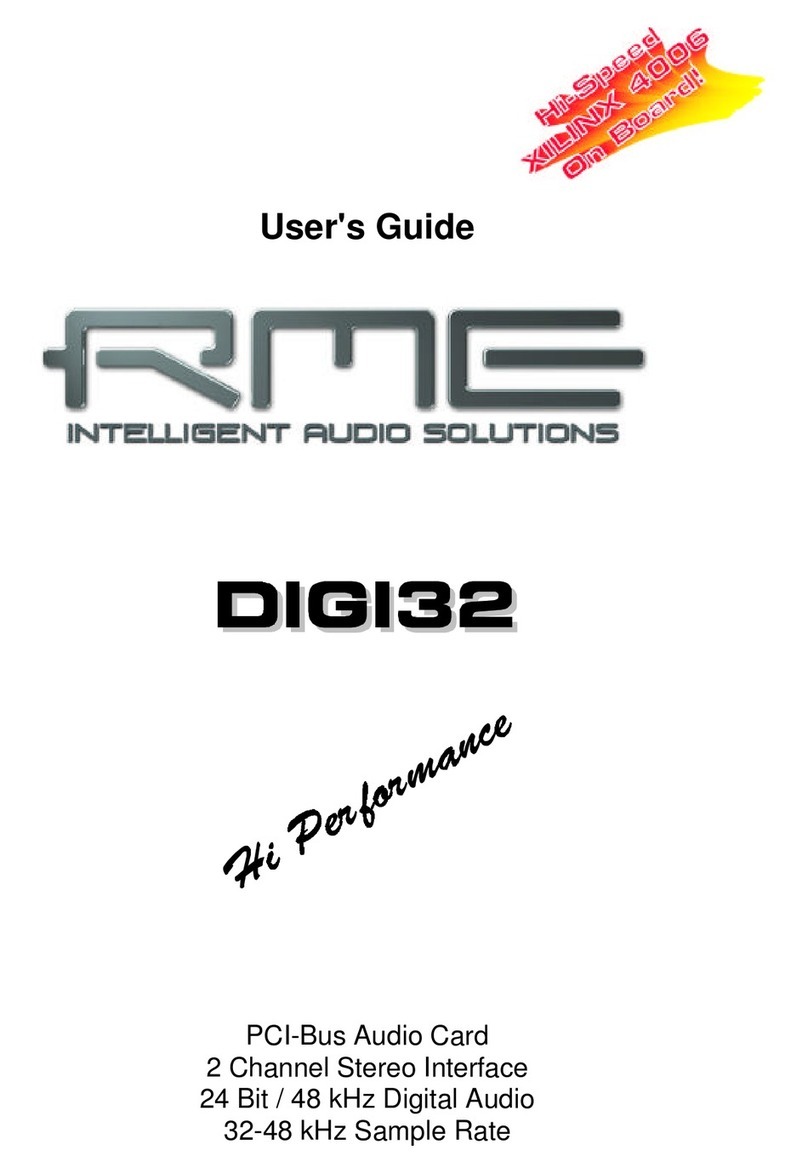
RME Audio
RME Audio DIGI32 User manual
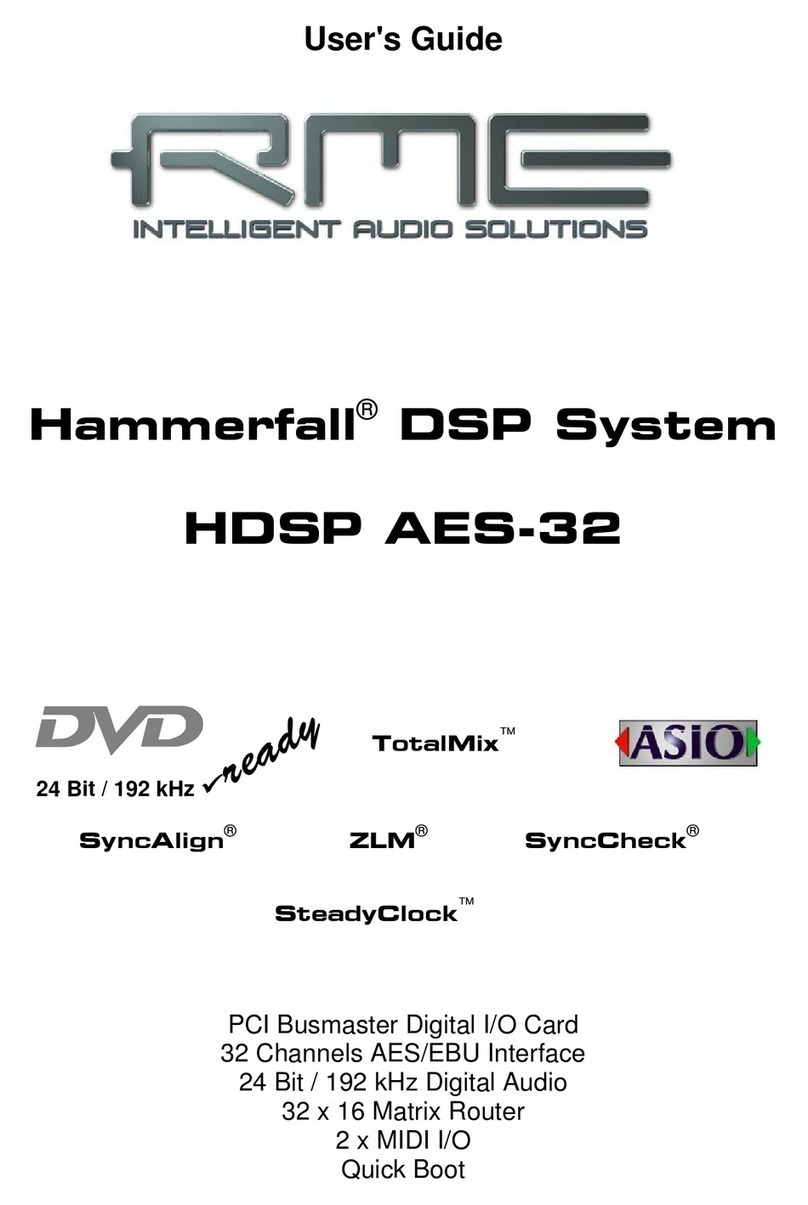
RME Audio
RME Audio Hammerfall HDSP AES-32 User manual
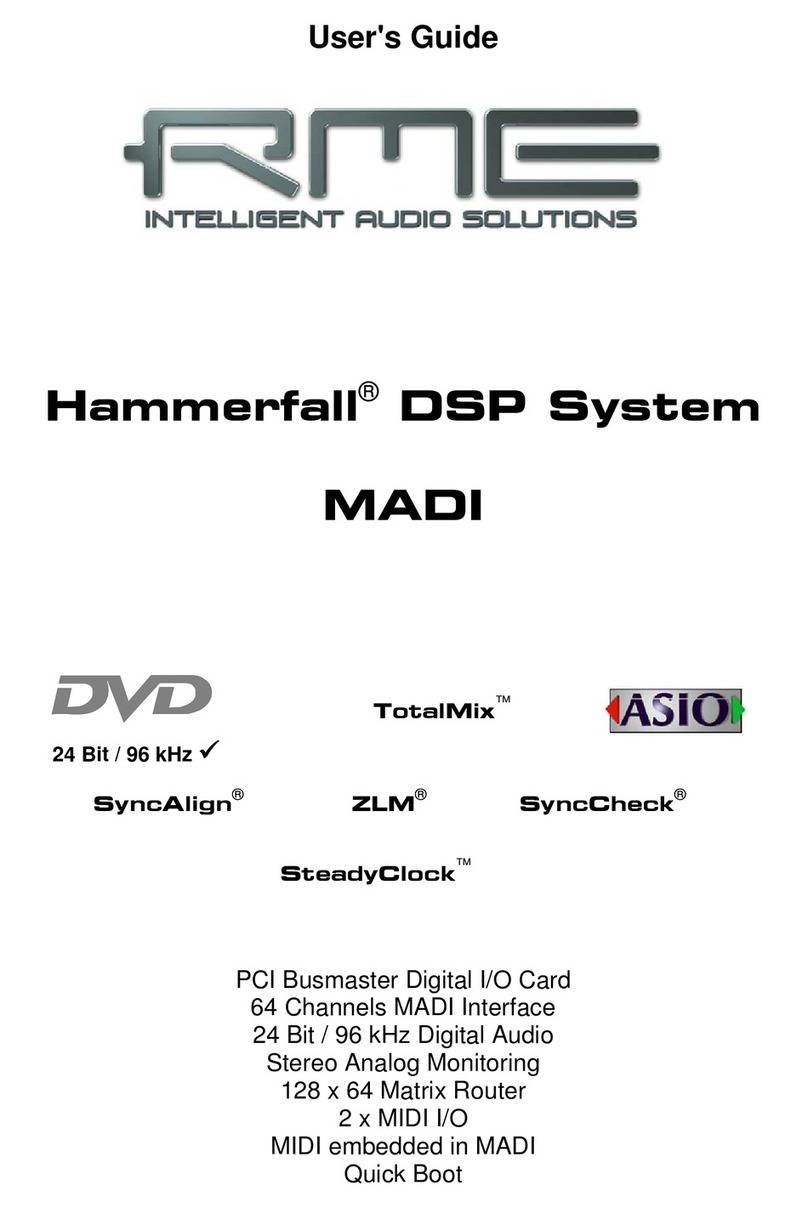
RME Audio
RME Audio Hammerfall Hammerfall DSP System User manual
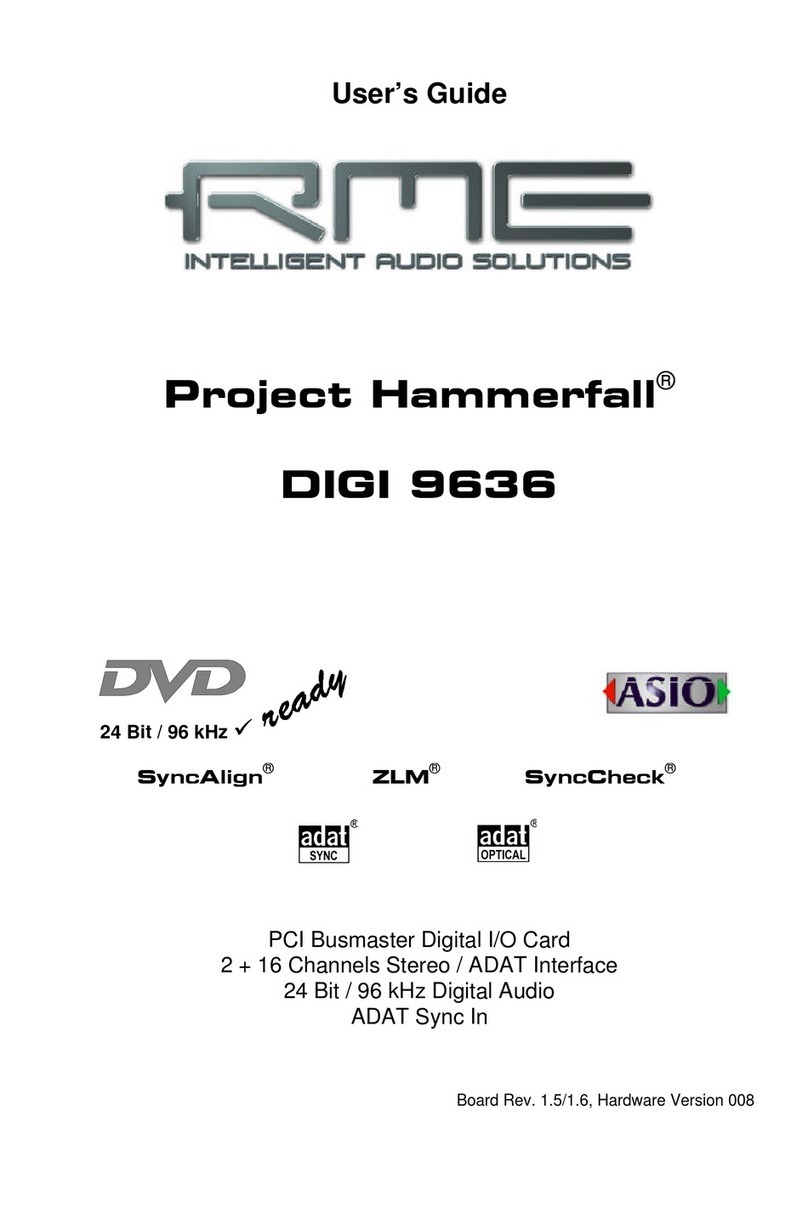
RME Audio
RME Audio Hammerfall DIGI 9636 User manual
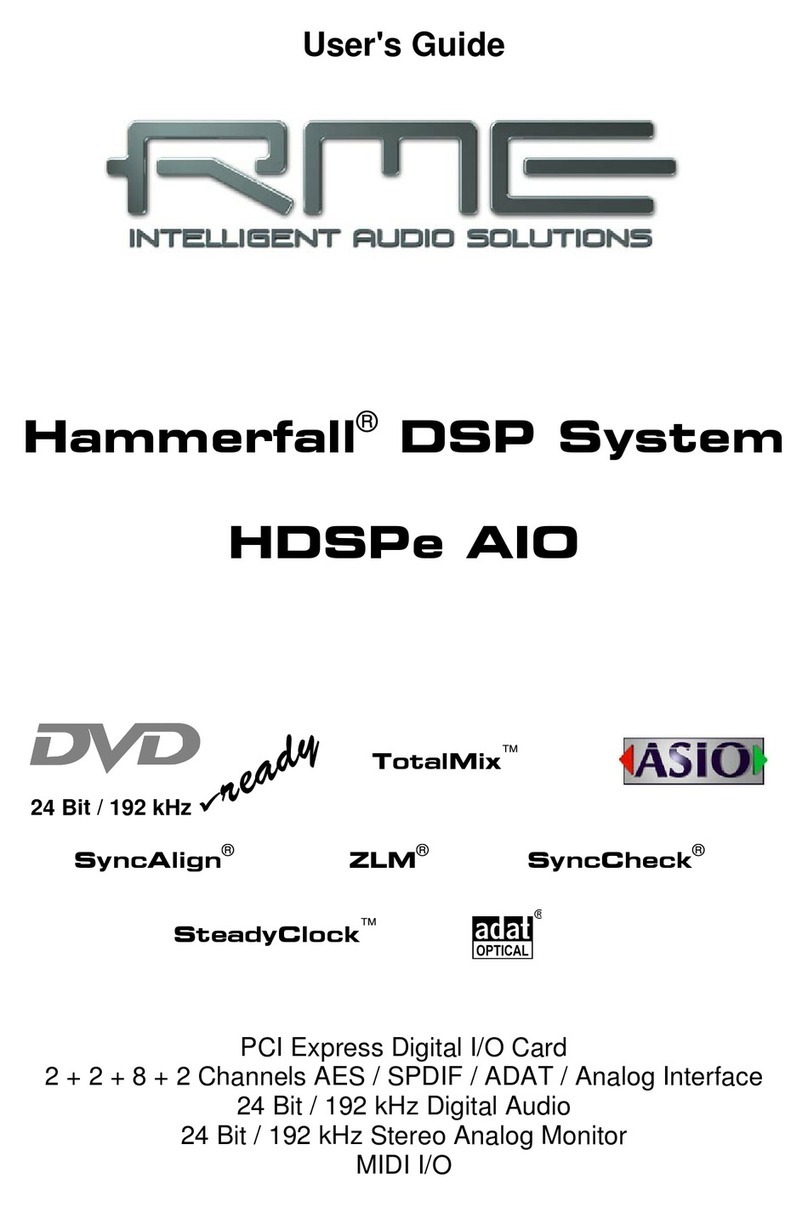
RME Audio
RME Audio Hammerfall HDSPe AIO User manual
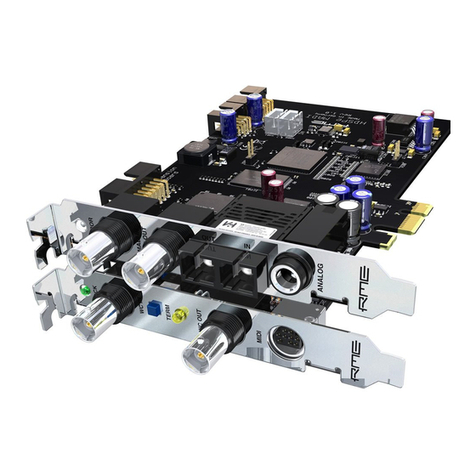
RME Audio
RME Audio Hammerfall HDSPe MADI User manual
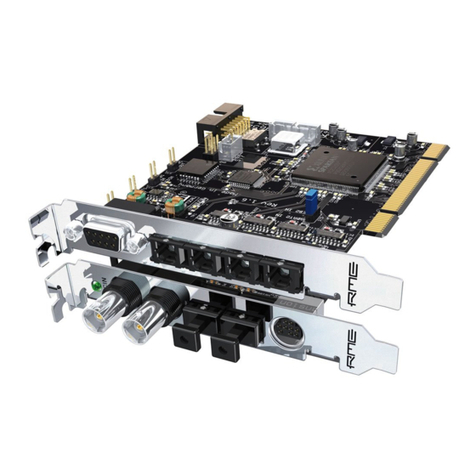
RME Audio
RME Audio Hammerfall HDSP 9652 User manual
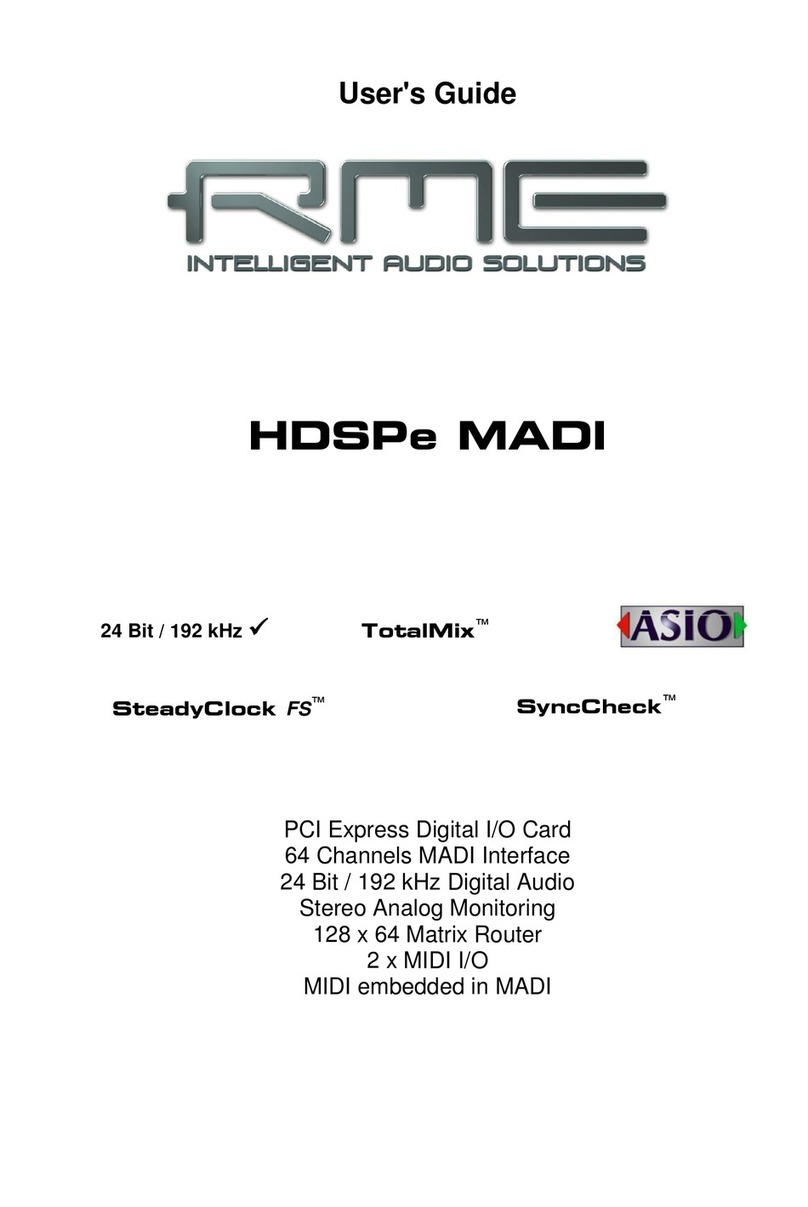
RME Audio
RME Audio HDSPe MADI User manual
